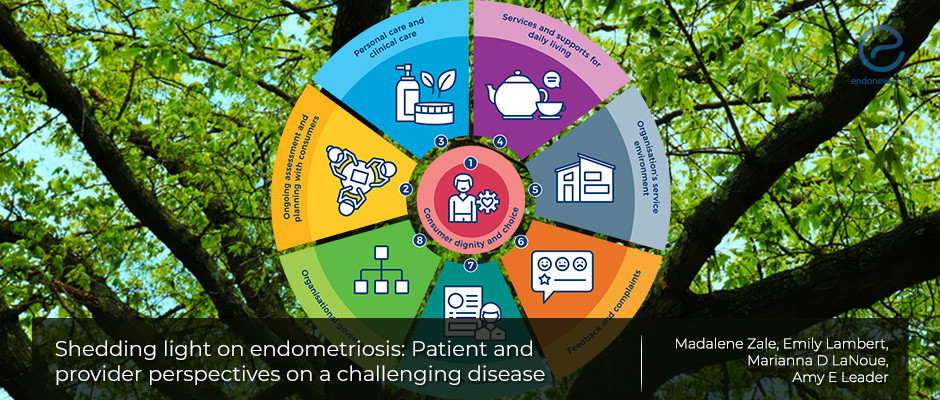How well do providers understand endometriosis?
Mar 10, 2020
Study shows that providers are frequently unfamiliar with the scope of endometriosis and find it challenging to care for patients with this disease.
Key Points
Highlights:
- The study revealed a lack of awareness of endometriosis among providers which may have resulted from various challenges such as lack of training and practice and difficulty in making a diagnosis
- From a patient’s perspective, the disease is also challenging as it has psychological, financial, and physical impacts on them and treatment options are limited
Importance:
- The results of the study has far-reaching implications for clinicians for improving the overall standard of care for endometriosis: revising the current guidelines for treatment, advocating for policy shift, incorporating the endometriosis community (patients, advocates, non-profits, medical experts) in discussions and decision-making process are just a few to name
What’s done here?
- Surveys and interviews were performed to understand healthcare provider perceptions and patient experiences with endometriosis in the United States
Key results:
- Only 11% of the providers surveyed accurately identified the prevalence of endometriosis. The interviews uncovered many issues such as limited training, difficulty in diagnosis and complexity of the referral process
- Patients with endometriosis cited the following challenges: difficulties interacting with the healthcare system, self-advocacy, quality of life, and limited treatment options
Limitations of the study:
- The patient sample cohort was small and not racially/ethnically diverse.
- Provider sample cohort was also small, thus likely not representing all of the perspectives of providers
Lay Summary
Endometriosis is a challenging disease no matter what side of the equation you are in, a patient or a provider who cares for patients with the disease. It impacts millions of women worldwide, making it one of the most prevalent diseases in the gynecology field. Yet, it is often misdiagnosed or diagnosis is delayed, which then results in unnecessary or inefficient medical interventions, and burdens the patients as well as the healthcare systems.
The purpose of this study was to understand the experience of individuals with the disease or those involved in treating it. The authors surveyed 53 healthcare providers to uncover their understanding of the prevalence of endometriosis and interviewed 4 providers to determine their experiences in diagnosing and treating it. Twelve patients were also surveyed about their experiences of living with the disease.
Of the 53 providers, only 6 (11%) identified the correct prevalence of endometriosis. During the interviews, the authors were able to uncover several key themes including limited clinical training; difficulty in making a diagnosis due to a myriad of factors such as the need for surgery or imaging and the unspecified pelvic pain; the complexity of the referral process and patient-provider dynamic, both of which plays an integral role in overall treatment plan for patients; and finally the importance of interdisciplinary collaborations as the disease presents in a variety of ways and the timely and accurate diagnosis would require multidisciplinary care teams. Although the number of providers interviewed is quite small, the results are in agreement with the current literature, therefore suggesting the results are reliable.
The patient interviews also unveiled several challenges such as the psychological impact of endometriosis, difficulties interacting with the healthcare system, the financial impact of the disease, being averse to hormonal therapies despite limited treatment options, lack of awareness and self-advocacy, concerns about fertility, and quality of life.
For advancing the overall standards of care for endometriosis, the challenges identified here from both providers’ and patients’ perspectives should be taken into account. Earlier diagnosis would allow for more appropriate treatments, minimize costs, and reduce years of painful symptoms for patients. Revisiting the guidelines for endometriosis treatment, utilizing a multi-specialty team of caregivers in diagnosis and treatment decisions, advocating for policy shift, securing more funding for endometriosis research, and most importantly keeping the communication channels open with the endometriosis community, which not only consists of patients and caregivers but also advocates, non-profit organizations, and medical experts, will significantly advance the treatment of this complicated disease and best meet the needs of the patient population.
The study is recently published in the "Journal of Endometriosis and Pelvic Pain Disorders".
Research Source: https://journals.sagepub.com/doi/full/10.1177/2284026520905239
endometriosis provider healthcare

